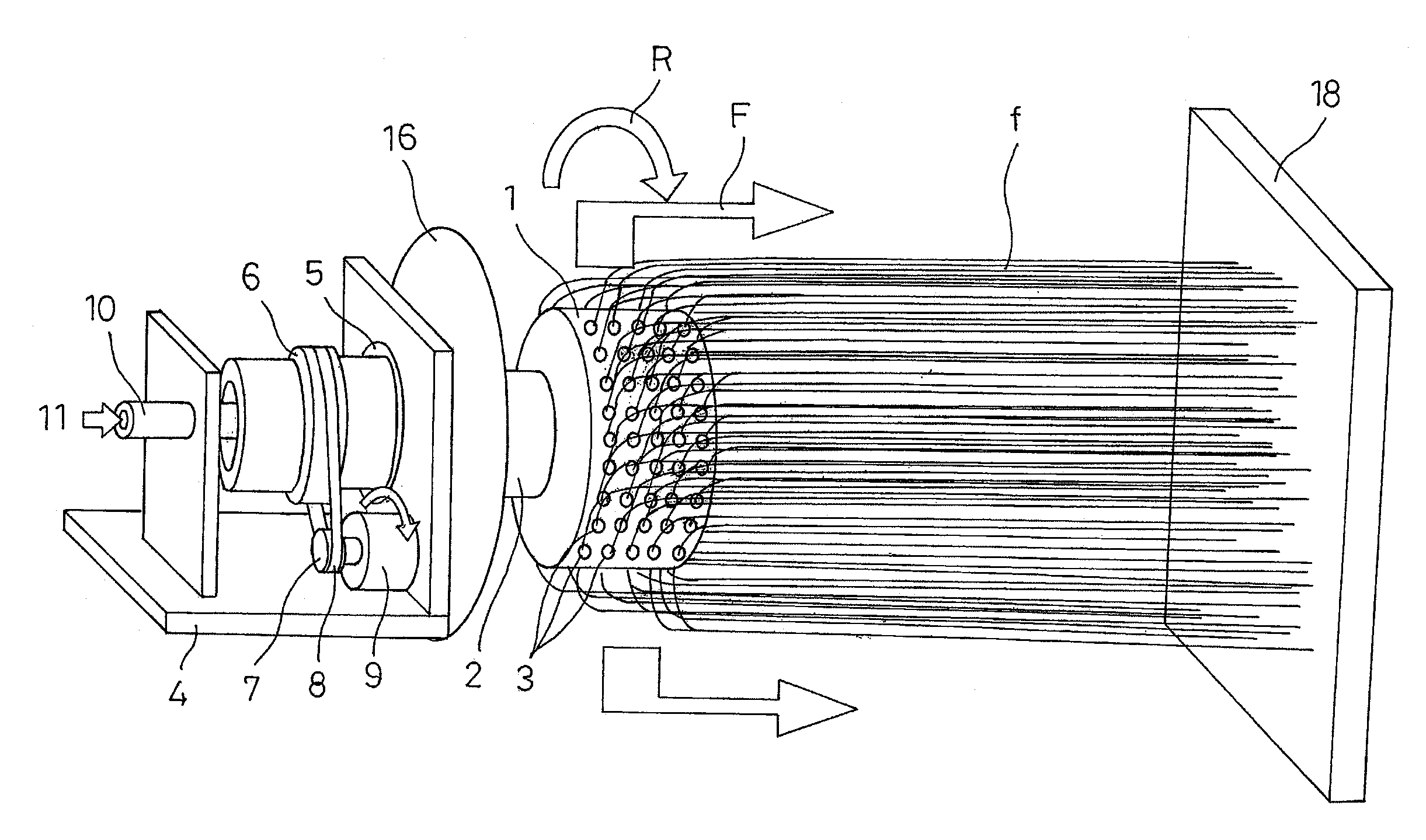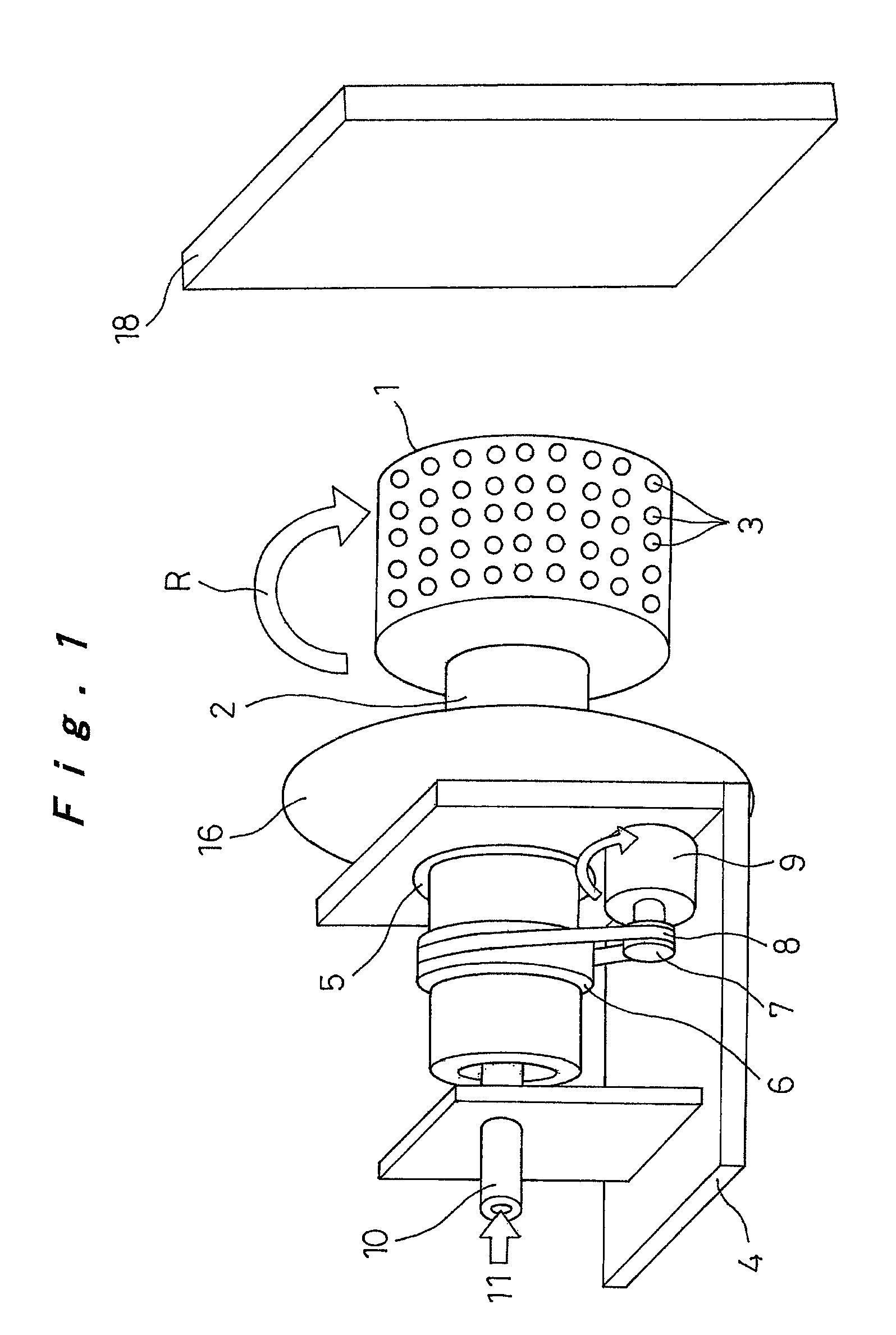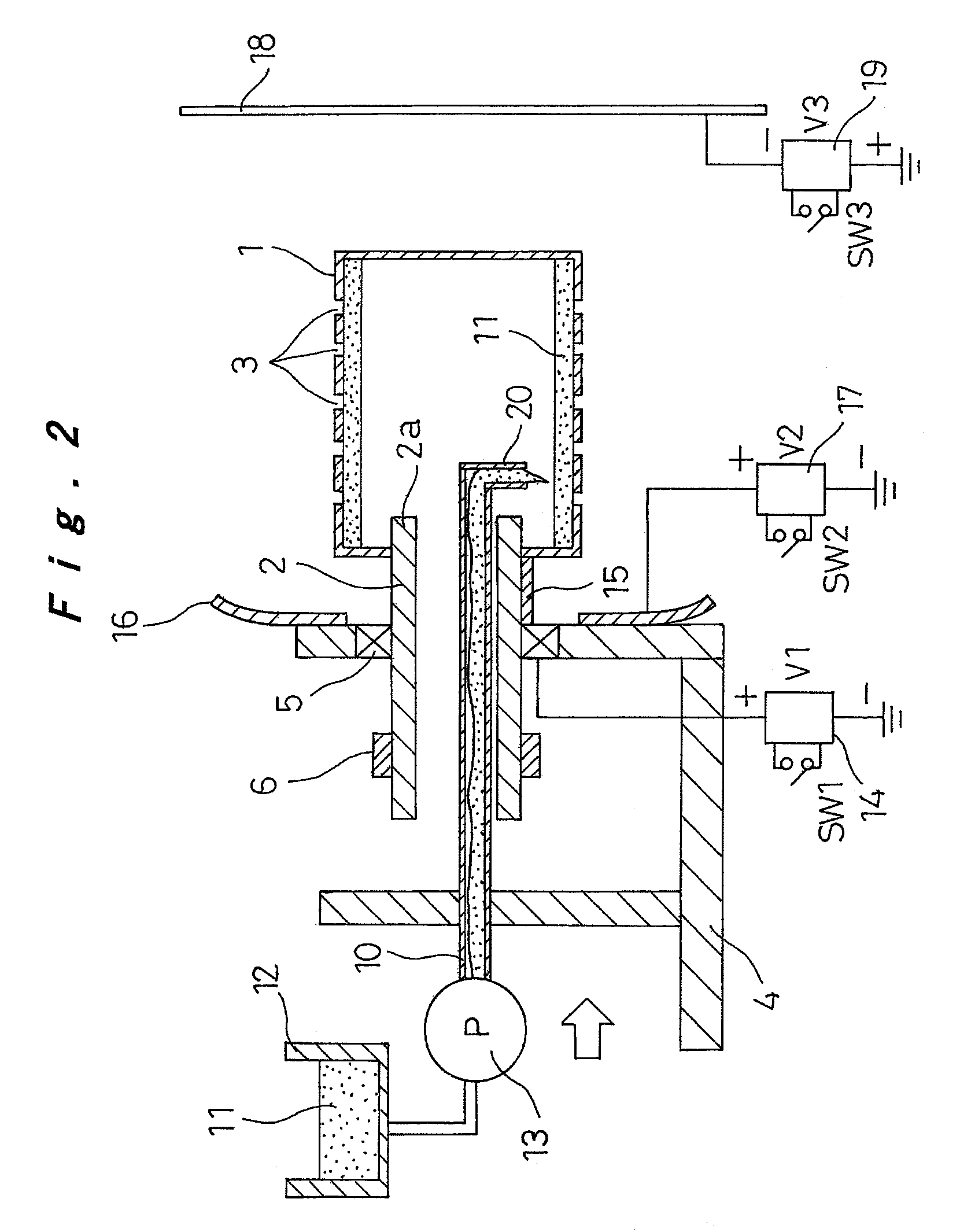Method and apparatus for producing nanofibers and polymer web
a technology of applied in the field of methods and apparatus for producing nanofibers and polymer webs, can solve the problems of inability to realize polymer webs, inability to produce nanofibers, and inability to achieve high-porous polymer webs. achieve the effects of high productivity, stably and efficiently produced, and improved productivity
- Summary
- Abstract
- Description
- Claims
- Application Information
AI Technical Summary
Benefits of technology
Problems solved by technology
Method used
Image
Examples
embodiment 1
[0060]First, Embodiment 1 of the production apparatus of the polymer web of the present invention will be described with reference to FIGS. 1 to 6C.
[0061]In FIGS. 1 to 3, reference numeral 1 denotes a cylindrical container with a diameter of 20 to 500 mm as a rotating container. The end of a rotating cylinder 2 passes through the shaft center of one end of the cylindrical container 1. The cylindrical container 1 is thus integrally fixed so as to be rotatably supported in the direction of arrow R around the shaft center by the rotating cylinder 2. The rotating cylinder 2 is formed from a material having high electrical insulation properties. The other end of the cylindrical container 1 is closed, and multiple small holes 3 with a diameter of about 0.01 to 2 mm are formed on a peripheral surface at a pitch distance of a few mm. The small holes 3 may be formed by holes which are directly open to the peripheral wall of the cylindrical container 1, or may be formed by a nozzle member wit...
embodiment 2
[0077]Next, Embodiment 2 of the polymer web production apparatus of the present invention will be described with reference to FIGS. 7 to 10. In the following description of the embodiments, constituent elements which are the same as in the previous embodiment are denoted using the same reference numerals, and a description thereof is omitted. Here, the points of difference will mainly be described.
[0078]In the above-described embodiment, an example was described in which a predetermined amount of the polymer solution 11 was supplied into the cylindrical container 1 based on the amount of the polymer web to be produced. However, in the present embodiment, the amount of the polymer solution 11 contained in the cylindrical container 1 is detected, and the supply pump 13 is operated and controlled based on that detected amount, so that a roughly constant amount of the polymer solution 11 is contained in the polymer solution 11.
[0079]In FIG. 7, contained amount detection means 25 is arra...
embodiment 3
[0083]Next, Embodiment 3 of the polymer web production apparatus of the present invention will be described with reference to FIG. 11.
[0084]In the present embodiment, as illustrated in FIG. 11, blowing means 34 is arranged between the cylindrical container 1 and the reflecting electrode 16 on one side thereof. Specifically, blowing blades 35 are installed on the rotating cylinder 2 at a position between the reflecting electrode 16 and the cylindrical container 1. As the rotating cylinder 2 rotates, air is blown toward the other side of the cylindrical container 1 as shown by arrow D.
[0085]According to this configuration, solvent which has evaporated by the air blown by the blowing means 34 is rapidly discharged, so that the solvent concentration of the surrounding atmosphere does not become high. Thus, evaporation of the solvent proceeds smoothly, the electrostatic explosion effects can be reliably obtained, and desired nanofibers f can be reliably produced. Furthermore, the advanta...
PUM
| Property | Measurement | Unit |
|---|---|---|
| voltage | aaaaa | aaaaa |
| diameter | aaaaa | aaaaa |
| diameter | aaaaa | aaaaa |
Abstract
Description
Claims
Application Information
 Login to View More
Login to View More - R&D
- Intellectual Property
- Life Sciences
- Materials
- Tech Scout
- Unparalleled Data Quality
- Higher Quality Content
- 60% Fewer Hallucinations
Browse by: Latest US Patents, China's latest patents, Technical Efficacy Thesaurus, Application Domain, Technology Topic, Popular Technical Reports.
© 2025 PatSnap. All rights reserved.Legal|Privacy policy|Modern Slavery Act Transparency Statement|Sitemap|About US| Contact US: help@patsnap.com



